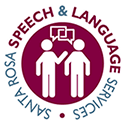Language-based reading impairments, also known as dyslexia, are a neurological condition that affects an individual’s ability to read, write, and spell. It is the most common learning disability, affecting approximately 10% to 20% of the population.
Dyslexia is a language-based condition, meaning that it affects an individual’s ability to process language. This includes understanding and recognizing the sounds that make up words, as well as recognizing the letters and words themselves. Dyslexia can also affect an individual’s ability to express themselves through writing.
Dyslexia is a complex condition that has multiple causes. It can be hereditary, meaning that it can be passed down through families. It can also be caused by brain differences that affect how the brain processes language. Research has shown that individuals with dyslexia have different patterns of brain activity when reading compared to individuals without dyslexia.
There are different types of dyslexia, each affecting a different aspect of language processing. Some individuals may have difficulty with phonemic awareness, which is the ability to identify and manipulate the sounds that make up words. Others may struggle with phonological processing, which involves the ability to recognize and manipulate the sounds and symbols of language. Some individuals may have difficulty with rapid automatized naming, which involves the ability to quickly name objects or symbols.
Dyslexia can have a significant impact on an individual’s academic and social life. Children with dyslexia may struggle in school, particularly with reading and writing tasks. They may also experience low self-esteem and social difficulties, as they may feel different or less capable than their peers. However, with early diagnosis and appropriate interventions, individuals with dyslexia can learn to read, write, and spell effectively.
Interventions for dyslexia typically involve a multi-sensory approach that engages different senses and pathways in the brain. This can include activities that involve listening, speaking, reading, writing, and visualizing. Interventions may also involve assistive technology, such as text-to-speech software or dyslexia-friendly fonts.
In conclusion, dyslexia is a language-based reading impairment that affects an individual’s ability to read, write, and spell. It is a complex condition with multiple causes and types, but with appropriate interventions, individuals with dyslexia can learn to read and write effectively. Early diagnosis and intervention are crucial in supporting individuals with dyslexia and helping them reach their full potential.

